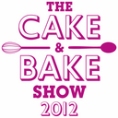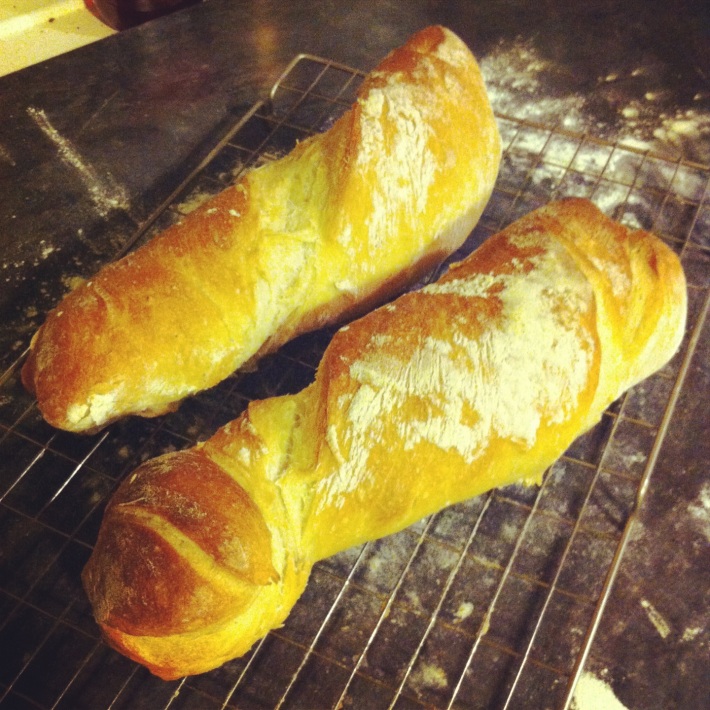 Now that I’ve finally put the photos onto my computer I thought I’d take the opportunity to review this year’s Cake and Bake show, that took place in London in September 2012.
Now that I’ve finally put the photos onto my computer I thought I’d take the opportunity to review this year’s Cake and Bake show, that took place in London in September 2012.
Last year was the first time the event had been held and also the first time an event of it’s kind had taken place on such a large scale and with such a high profile, with many famous and influential faces from the world of baking set to appear.
My girlfriend and I arrived in London in what should have been good time, however several tube line closures meant we got later than planned. Therefore we arrived at the same time as hundreds of other visitors and had to spend a frustrating amount of time queuing up to get in. Once we had, we then had to try and get our bearings in what was a very busy hall at Earls Court, finding ourselves amongst a sea full of brightly coloured and tightly packed cupcake decorating stalls. It was immediately obvious from this and from looking at the floor guide that there was much more of an emphasis towards decorating cakes, specifically cupcakes, than there was towards any sort of bread making. Luckily there was one area, the bakery, that was dedicated solely to a serious of talks from various well-known bakers.

Some, such as Ed Kimber, had appeared on TV. Others, like Aidan Chapman, were involved in the Campaign for Real Bread. Luckily we got a front row seat for one of Aidan’s talks, which turned out to be one of the highlights of the day. He was very energetic and passionate about his work for the campaign, and took the time to explain the work that the campaign does as well as showcasing some recipes that fitted into the ethos of ‘real bread’.
We then made our way through the crowds to the tiny area dedicated to bakeries and suppliers of bread making equipment. As I said earlier there was a much bigger emphasis towards cakes, and the bread making area consisted of maybe six or seven stalls and nothing more. You could sign up to the Campaign for Real Bread, buy flour and proving baskets, or freshly made bread from a couple of bakeries, but nothing more.
Wanting to make the most of our way we decided to check out the rest of the show. However this proved nearly impossible as the stalls were for the most part packed so closely together and surrounded by crowds three or four people deep. Casual browsing was difficult unless you wanted to push your way to the front to look at yet more cupcake cases.
In need of a break, we found our way to the tearoom area. We ended up queuing for about twenty minutes to pay for over-priced pre-packed food and drink. This space should have and would have been much better used to sell bread, cakes, pastries, etc, made by some of the bakeries and businesses at the show.
We wandered around some more and managed to have a good look at most of the stalls and stands. The largest part of exhibition space was reserved for large demonstrations by the star guests of the event, most notably the presenters of the BBC’s ‘Great British Bake Off’, Paul Hollywood and Mary Berry

What we saw of their demonstration was excellent, but having not planned to see it we were unable to get a seat and so had to watch from the edges. Luckily we did get to see them both doing a book signing, and then got much closer to Paul Hollywood when he was presenting a family baking competition, during which he demonstrated some of his most well-known bakes such as the eight-plaited loaf, which was amazing to watch.
By now, most of the day had gone and the venue was beginning to empty out. We had seen nearly all that we had wanted to and spent the last bit of our day visiting the last few areas and looking at the winners of the beach-based cake making competition, before stepping out into a wet and windy London evening.
There was a surprising amount of negative feedback on the Cake and Bake Show’s Facebook page and I have to admit that I agree with a lot of it. Whilst some of it was petty, I do agree that the venue was vastly overcrowded. It should have been held in a bigger part of Earls Court, particularly as it sold out in advance so the organisers would have known how many people to expect. Also, a bigger venue would have meant more space between the stalls, and less crowds. We ignored some areas because they were too busy to walk down. There was also the option of attending a number of classes for £8 per person. However these were not in separate rooms but merely in roped off areas around the venue. We saw a lot of people who hadn’t paid stood the other side of the ropes and getting the same experience for free.
My biggest complaint though is that there was simply not enough to do with bread making. The talks we saw were very interesting, but the Doves bakery stall had sold out of most of the equipment they had early on the day we attended, there was only one bakery selling freshly made bread, and I would have appreciated more of an opportunity to get some hands on experience.
Still, it was the first time the event had taken place, and it does seem like the organisers are keen to make some changes for this year’s event which is taking place in Manchester in April, and again in London in September. I’ll be going to one of them, and hopefully having a better time.
Thanks for reading,
Chris




